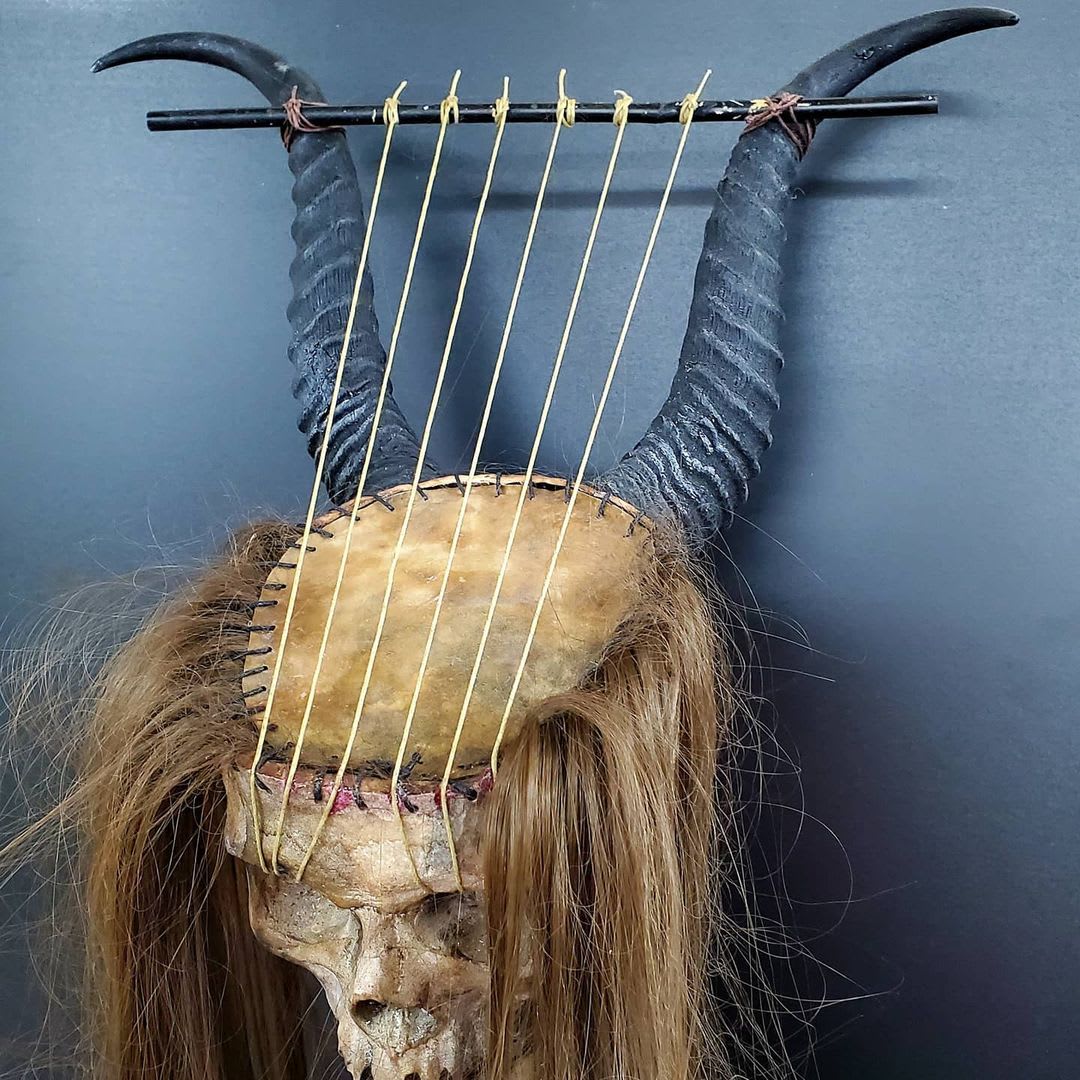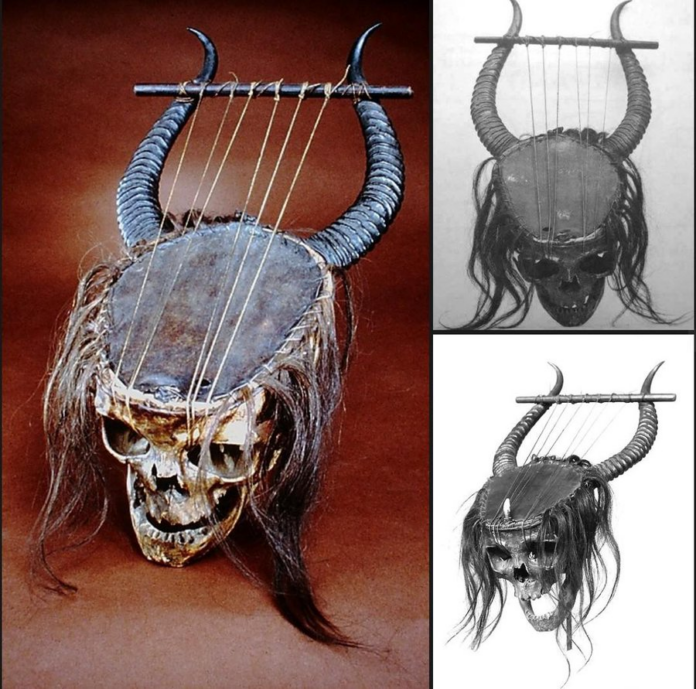In the vast collection of The Metropolitan Museum of Art, a truly unique and captivating artifact stands out – a Central African lyre constructed from a human skull and antelope horns. This 19th-century instrument is a remarkable testament to the intersection of art, music, and cultural exchange in the colonial era.
Description and Materials
![A Central African lyre made from a human skull, antelope horns, skin, gut, and hair. 19th century CE, It is currently stored at The Metropolitan museum [580x779] : r/ArtefactPorn](https://preview.redd.it/zpdzx06cz5c51.jpg?auto=webp&s=1a36d6ac457189567dcffa605418e4aa768107d2)
The lyre measures an impressive 36.5 cm in length, 14 cm in width, and 13 cm in depth, showcasing the skilled craftsmanship of its creator. Its composition is a blend of the macabre and the remarkable, featuring:
Human Skull
Forming the main body of the lyre, the human skull serves as the foundation for this extraordinary instrument.
Antelope Horns
Utilized as both structural and decorative elements, the antelope horns add a unique visual flair to the lyre.
Wood
Likely used for the framework and additional structural support, the wooden components lend stability to the intricate design.
Skin, Gut, and Hair
These materials were used for the strings and other functional components, allowing the lyre to be played and produce its haunting melodies.
Provenance and Attribution

Initially, when the lyre was acquired at the end of the 19th century, it was mistakenly thought to be from South America. However, by 1906, it was correctly reattributed to Central Africa. Despite its macabre nature, the instrument was likely created by a local artisan with the intention of appealing to European collectors and traders, aligning with the period’s trend of crafting sensational objects for the burgeoning market in ethnographic curiosities.
Cultural and Ritual Significance

While there is no specific Central African tradition known to utilize instruments made from human remains, some have speculated that the lyre might have held symbolic or clandestine ritual significance. However, it is more plausible that it was a clever creation aimed at trade rather than traditional use. The use of human and animal remains in musical instruments has historical precedents in other cultures, such as the Tibetan damaru and Rkangling, as well as the Ashanti royal drums.
Comparative Context
The Central African lyre is part of a broader category of macabre instruments that use human and animal remains. These instruments often served symbolic purposes or were used in rituals, such as the Tibetan damaru, a drum made from two human skulls, used in Buddhist rituals to signify the transient nature of life.
The Central African lyre made from a human skull and antelope horns is a fascinating artifact that exemplifies the blending of cultural practices and the creation of objects for trade in the 19th century. While it may not have a direct traditional lineage, it represents a unique piece of musical and cultural history, captivating the imagination and challenging our understanding of the intersection of art, music, and the human experience.
